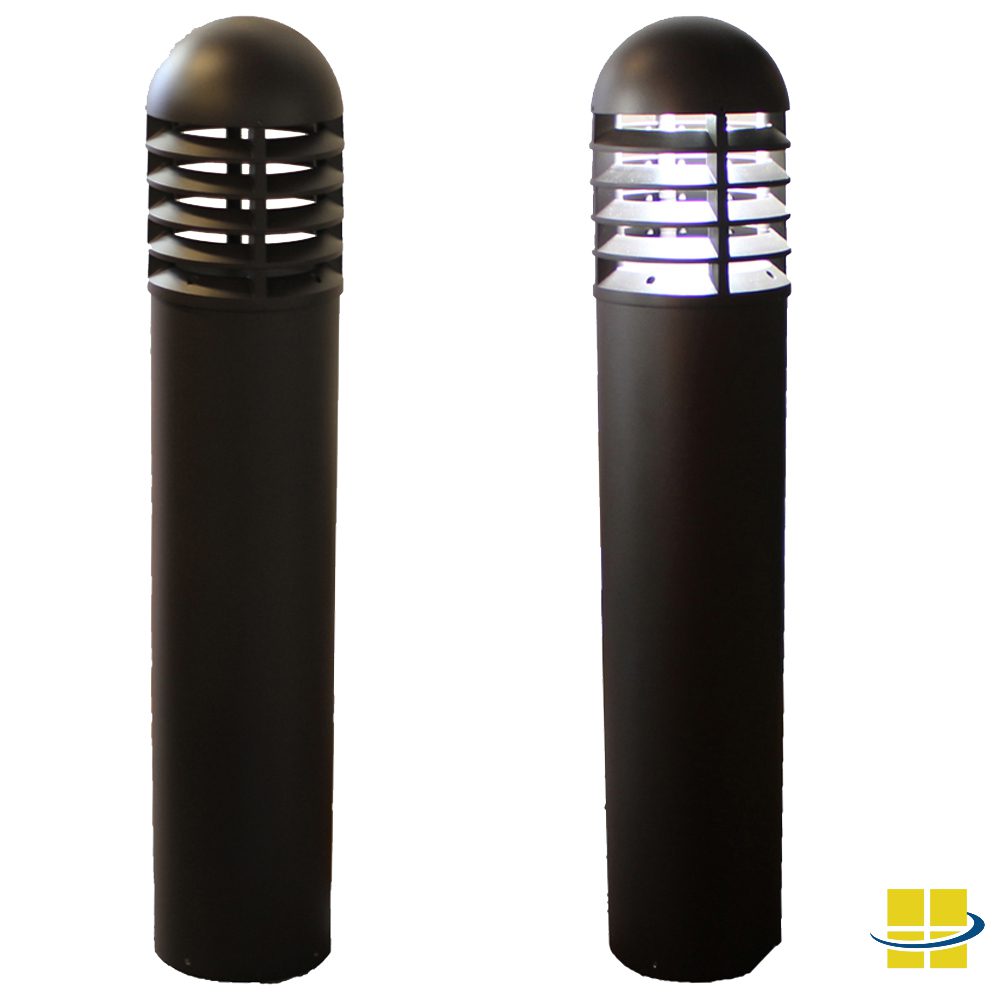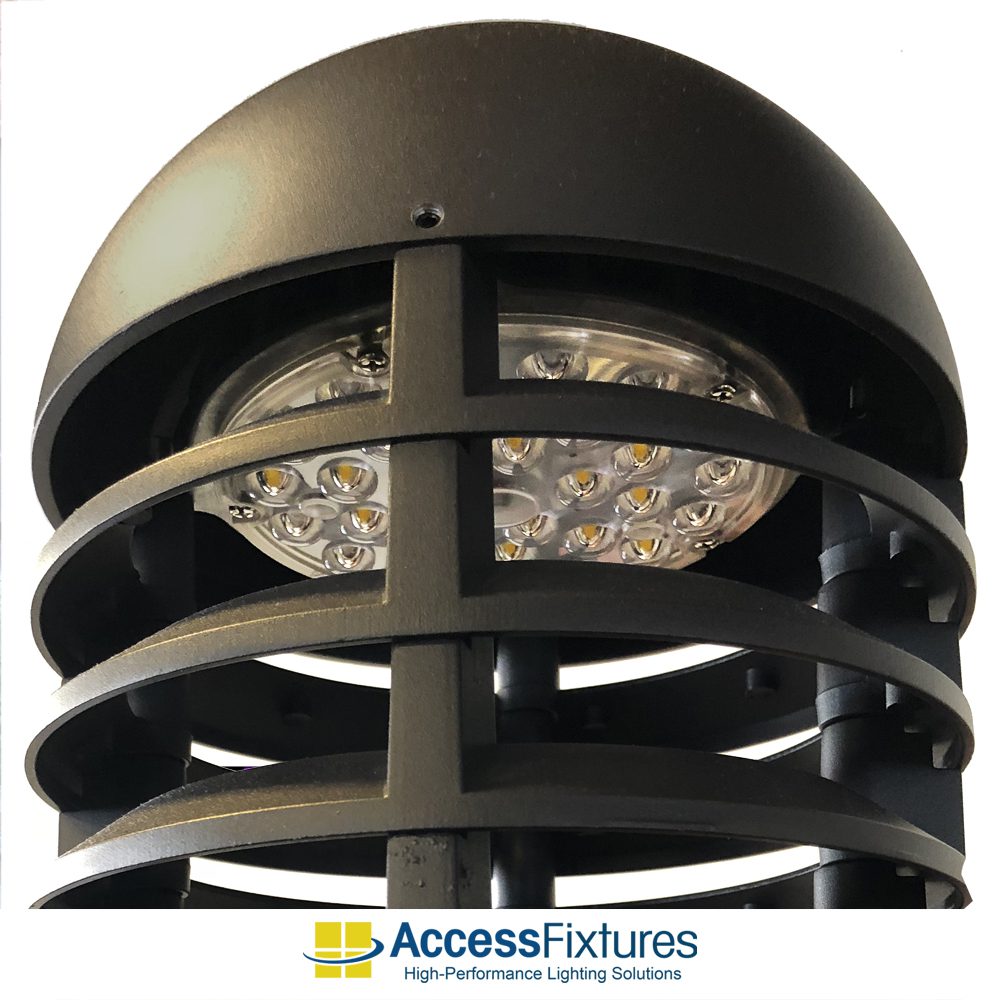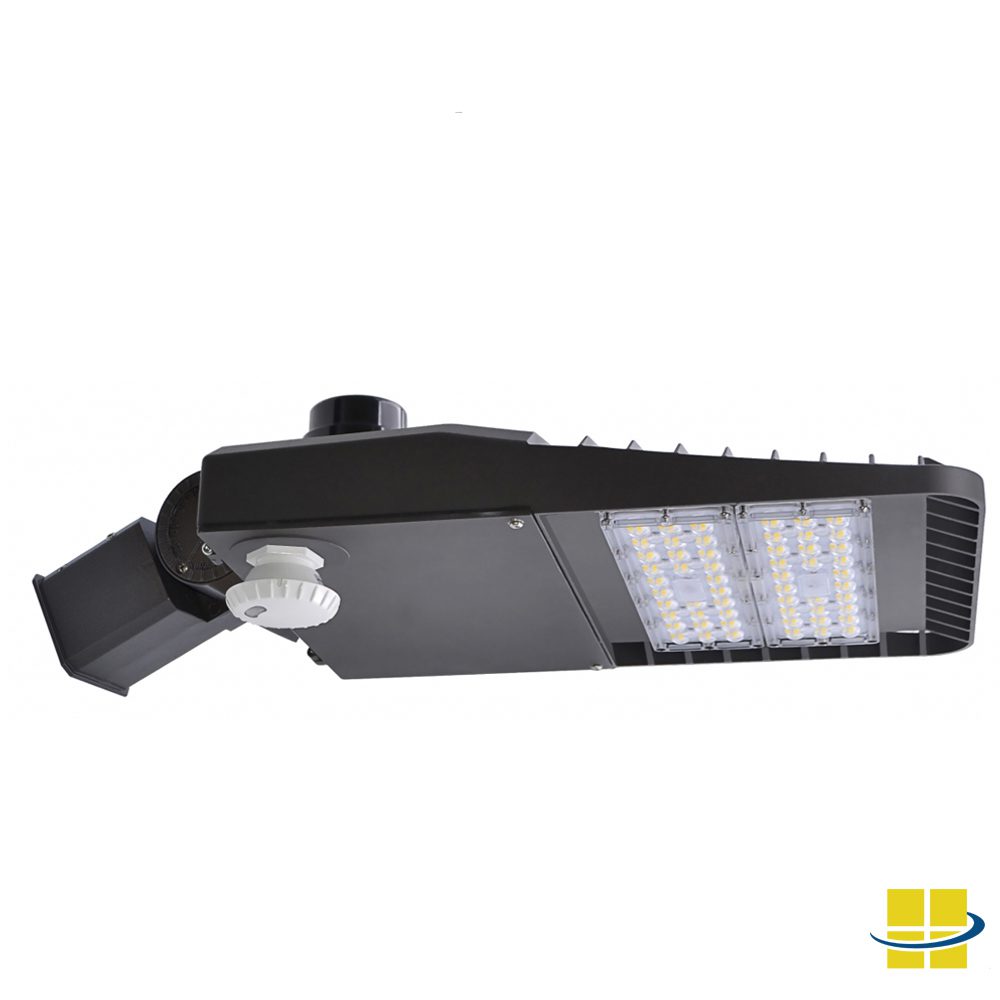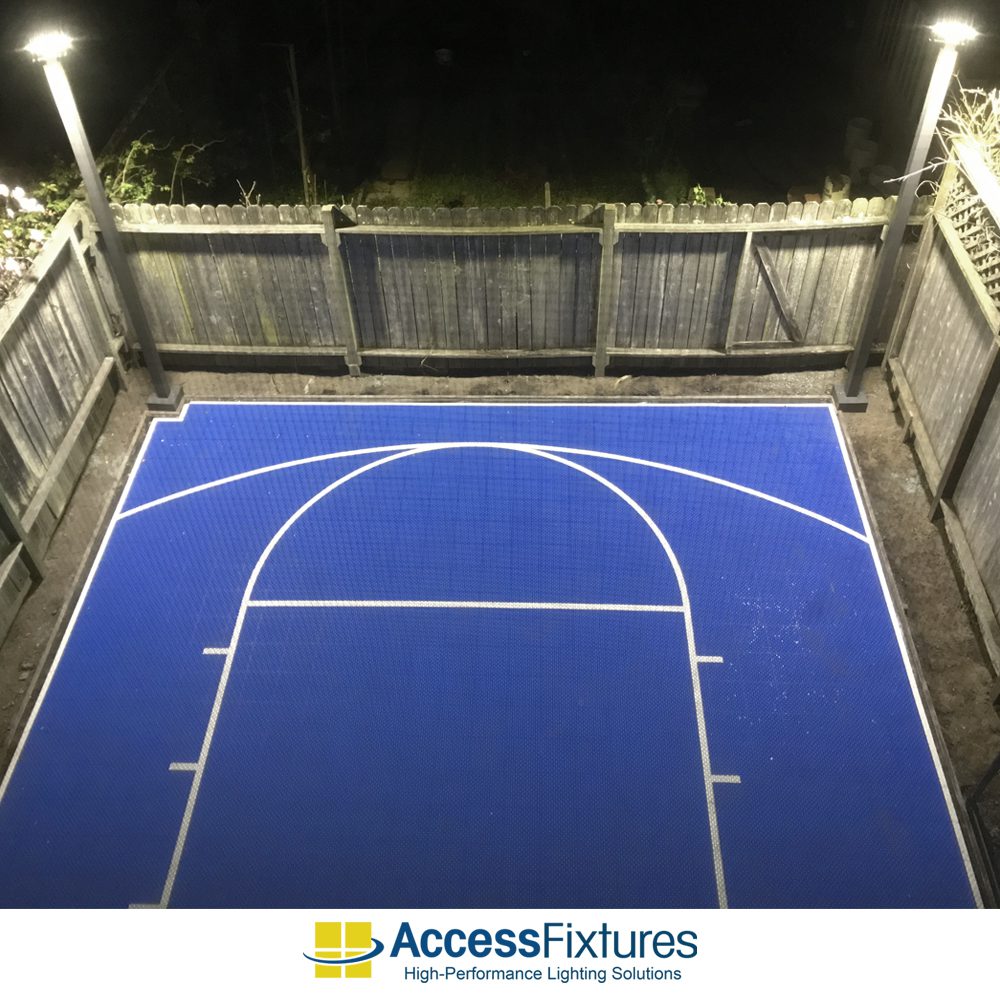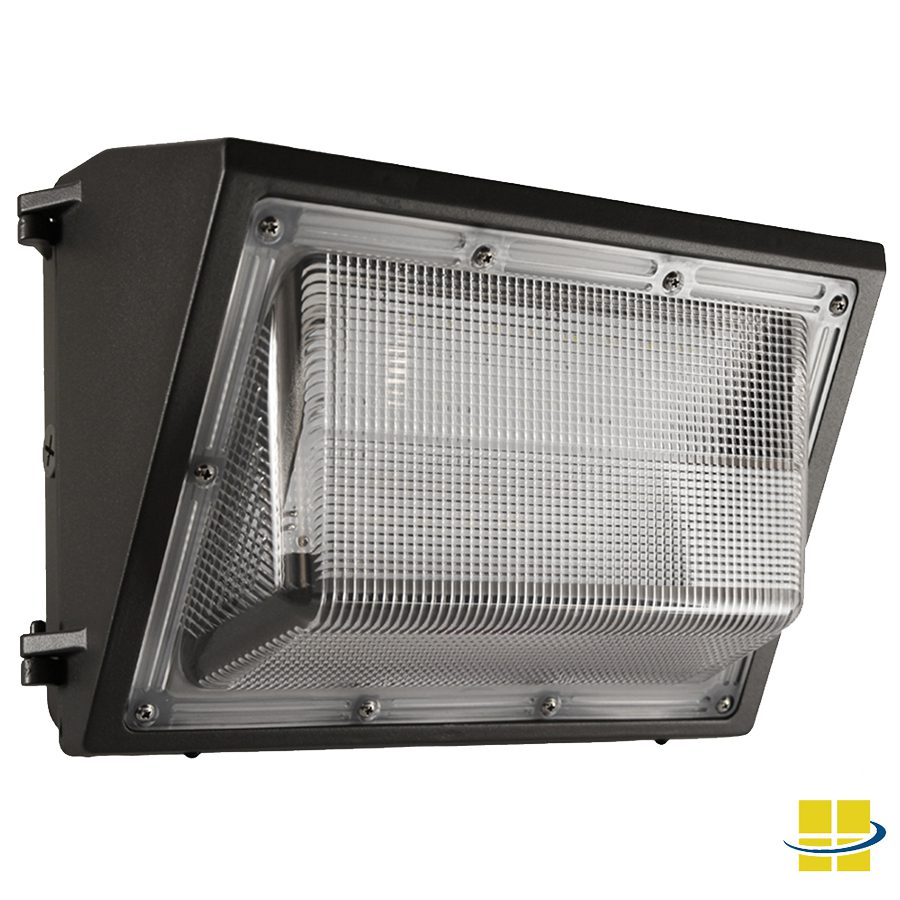Are you still on the fence about converting to LED? You are not alone—many are still skeptical about LED conversion. HID, fluorescent, and other traditional light sources are becoming harder to find online or in stores, but is it really worth making the switch to LED? Read onward to find the answers about longer-term cost savings, blinking LEDs, dimming, and more. When you’re ready, give Access Fixtures a call to discuss whether or not an LED lighting solution makes the most sense for your commercial, industrial, or residential property.
We will look into even more myths about LED conversion. Access Fixtures is here to help you keep up with the ever-changing LED technology by busting, dispelling, and debunking the myths and misconceptions you may have.
LED Conversion Myth #10: LEDs Blink Out When They Die
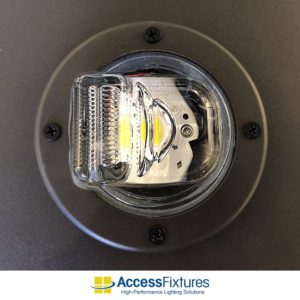
LED chips like the one seen in this lens from the ROBU LED Flood Light use less wattage than traditional filament light bulbs, allowing one to save money on electricity in the long run.
Answer: Unlike metal halide, fluorescent, and incandescent fixtures, LED chips do not in fact blink out when they reach the end of their expected lifetimes. LED lifetimes range from 50,000 hours and beyond; while they won’t necessarily blink at that point, they will emit less light than when you first installed them. This is due to something that affects all light sources—LED or otherwise—called lumen depreciation. Despite this, a basic LED light bulb is rated to last about six times longer than a traditional filament-based bulb.
This isn’t to say LED fixtures will never, ever blink. They sometimes flicker, but this is often due to defective drivers, faulty LED chips, troublesome photocells, dimmer incompatibility, or other manufacturing flaws. If your LED fixture starts to blink, call the company that sold it to you; after a bit of troubleshooting, you’ll likely be eligible for a replacement fixture or component.
LED Conversion Myth #9: One Pack of Traditional Light Bulbs Is Cheaper than One Pack of LED Bulbs
Answer: In the short-term, the answer is [often] yes. However, LEDs and LED fixtures become more affordable every year, so the price differential is negligible. Even more important, if you’re looking to save money in the long term, LEDs make a significantly better option. One LED light bulb will last, on average, as long as an entire six pack of incandescent light bulbs. It is hardly “news” by now to point out that LEDs deliver more light and require fewer watts to do so. To give you an example of how much you can save by purchasing LED light bulbs, let’s compare a 60-watt incandescent lamp against its LED equivalent.
According to Choose Energy, the average cost of one kilowatt per hour in the month of January 2018 across the United States was just over 13 cents/kWH. Let’s use this as our electricity cost and assume you’ll be using the lamp for 10 hours every day.
Running the 60-watt lamp for 10 hours every day at a price of 13 cents/kWH will cost you $28.20 each year. Using the 9-watt LED lamp under the same conditions will cost you just $4.23 each year. Both fixtures will experience lumen depreciation, though the incandescent will be far more affected and will have to be replaced after about 1,500 hours. The LED lamp will depreciate slightly over time, yes, but it isn’t until 50,000 hours (or more) that you’ll have to consider replacement.
Now imagine the savings after upgrading your entire facility to LED. Still using 1,000-watt HID fixtures to illuminate your tennis or basketball court? Do you have high-pressure sodium wall packs around the perimeter of your building? Call Access Fixtures today to find suitable LED replacements for these expensive, outdated units.
LED Conversion Myth #8: LEDs Only Shine Bright-White, Glaring Light
Answer: One of the wondrous opportunities provided by LED lighting is flexibility of color temperature. By selecting particular color temperatures (or Kelvin temperatures), you can achieve warm, candle-like light, orange light, bright sky-blue light, and everything in between. Many LED fixtures come in 3000K, 4000K, and 5000K, though we can easily achieve any exact Kelvin temperature you desire or require.
LED Conversion Myth #7: LEDs Need a Warm-Up Time
Answer: Unlike fluorescent lamps, metal halide lamps, and other traditional lighting apparatuses, LEDs hit their full brightness almost immediately after being engaged. Older technologies turn on slowly or flicker into life, and repeatedly turning them on and off will shorten their lifespan. LEDs are resilient in the fact that they can be activated and deactivated in short sequences without negatively affecting their rated lives. For example, LEDs make perfect sense for professional hockey rinks, where some fixtures are turned off for on-ice projections, ceremonial face-offs, or other presentations, but are then quickly turned back on for the start of play. This leads us into our next myth.
LED Conversion Myth #6: LEDs Are Not Dimmable
Answer: LED fixtures are easily dimmed, but via a different process than older lighting technologies. Instead of altering the amount of power sent to a filament, LED chips and arrays dim by turning on and off in rapid succession. Keep in mind, not all LED bulbs are dimmable, but this will be clearly marked on product spec sheets and data. Both dimmable and non-dimmable LED lamps will work seamlessly in non-dimming lighting fixtures (at full power), though using a dimmer to adjust a non-dimmable LED lamp can be dangerous.
Recapping and Looking Ahead
In this article, we covered myths about how LEDs and traditional light sources act near the end of their lives, the long-term frugality of LEDs, color temperature, start-up time, and dimming.
Stay tuned for our follow-up post, which will touch on the heat generated by LEDs, vibration resistance, and more. As always, if you have any questions, you are more than welcome to contact one of our lighting specialists by phone at 800-468-9925 or by email at [email protected]


